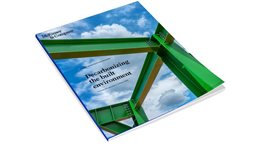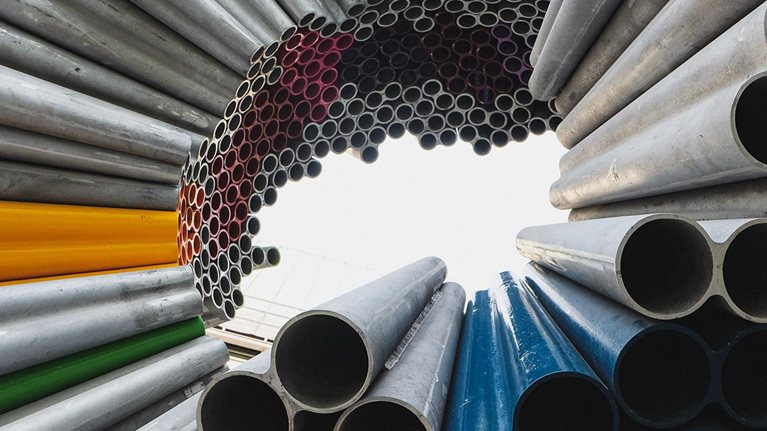Although the advice to “do well by doing good” (attributed to Benjamin Franklin) has influenced business leaders for generations, it is likely more relevant today than ever.
In an effort to move toward net-zero greenhouse gas (GHG) emissions, asset owners of all types are increasingly recognizing that the goals of business and global sustainability have become inextricably linked. Investors in publicly traded companies now consider climate change to be the most pressing environmental, social, and governance (ESG) issue.1 Institutional investors are similarly engaged: an international group of 236 asset managers has formed the Net Zero Asset Managers initiative in support of reaching net-zero emissions by 2050.2 And private-equity general partners are integrating ESG into due diligence and strategy, increasing transparency, and working to improve ESG performance in portfolio companies.
While conventional financial metrics clearly remain important, the value of investments in new assets is also dependent on how well they support ESG goals. For example, internal carbon pricing (ICP)—an internally set, hypothetical cost per metric ton of emitted CO2—is increasingly used to guide capital investment decisions.3
Today, achieving corporate goals depends on achieving climate goals—and vice versa. The most viable path from net-zero goals to results requires developing and delivering $9.2 trillion in projects each year through 2050.
Changing definitions of asset value require a new framework for developing and delivering net-zero projects
Historically, project managers have focused on creating asset value by meeting safety, cost, quality, and schedule objectives. Environmental regulations and permits set the conditions under which the project could proceed, and project organizations, work processes, and best practices evolved in accordance with these priorities.
Today, creating asset value requires expanding project responsibilities to meet net-zero objectives. This in turn affects organizational strategies, which asset owners must use to deliver the net-zero project portfolio as well as the project development and delivery plans for each project.
A new approach, net-zero project management, expands on current best practices to account for the additional responsibilities associated with decarbonization. In doing so, net-zero project management recognizes three sources of carbon emissions associated with a typical capital asset:
- Emissions from operations are associated with operating, maintaining, and eventually decommissioning the asset.
- Emissions from manufacturing (also known as embodied carbon) are associated with the energy required to produce the materials from which the asset is built.
- Emissions from construction are associated with the energy required to perform direct and indirect construction activities.
Would you like to learn more about our Global Infrastructure Initiative?
Net-zero project management recognizes that reducing or eliminating each of these emissions sources requires redefining and broadening conventional engineering, procurement, and construction responsibilities (Exhibit 1).

Broadening the scope of net-zero engineering
Site selection factors into the use of renewable power sources, while transportation methods for feedstock and product are evaluated to reflect GHG emissions. As the project progresses to focus on facilities engineering, the design focuses on minimizing GHG emissions from operations and can also include the optimization of product specifications. In some cases, industry consortiums can support the application of new technologies. For example, a coalition of companies is helping Singapore achieve its net-zero emissions pledge by accelerating the development of carbon capture, utilization, and storage (CCUS) technologies to create the country’s first end-to-end decarbonization process.4
Specifications for engineered equipment and materials now prioritize minimizing GHG emissions associated with manufacturing and power consumption, and new design tools can help engineers reduce operating emissions.5 For example, to help design buildings for energy efficiency, the US Department of Energy’s Building Technology Office, a division of the National Renewable Energy Laboratory, provides EnergyPlus, an open-source program that models energy consumption.6
Engineering can also consider emissions in addition to conventional measures of asset value. Value engineering (VE) has long been used as a design optimization process to reduce capital and life cycle costs. A conventional VE workshop results in an A-list of ideas clearly worth implementing, a B-list of those that may or may not add sufficient value, and a C-list of those that are tabled for consideration on later projects (Exhibit 2). These same techniques can be applied to increasing value by reducing GHG and other emissions.

Engineering can also play a role in working with procurement as new approaches to setting supplier expectations for addressing manufacturing emissions are incorporated into supply chain management.
Finally, constructability has long been an important aspect of engineering. Now, in addition to reducing cost, time, and risk, constructability studies can also include means to reduce construction emissions through design decisions that influence productivity.
Expanding the role of net-zero procurement
Previously, supplier and service provider contracts stressed cost, quality, and schedule performance. Net-zero procurement still emphasizes these factors, but it also prioritizes decarbonization as well as new ways to allocate commercial risk. Additionally, each step of the procurement process can now be reviewed to incorporate GHG emission requirements in contractor or supplier prequalification, bidding requirements and evaluation, and contract terms and conditions.
Given that 70 to 80 percent of most organizations’ GHG emissions are related to the supply chain, it is no surprise that global organizations are already working closely with suppliers to enable the energy transition.7 According to a 2022 World Economic Forum paper, supply chain sustainability has shifted from being “niche and public-relations focused … to a core business and global competitiveness concern, notably in the past three to four years.” Companies are increasingly setting ESG targets for their supply chains or deploying direct interventions such as supplier capacity building and “preferred-supplier” lists.8
Until now, buyers have found it challenging to assess embodied carbon from alternate suppliers. For example, two identical steel beams may have very different levels of embodied carbon, with one manufactured using energy from coal-fired sources and the other using renewable energy sources. To meet this challenge, a nonprofit consortium has developed the Embodied Carbon in Construction Calculator (EC3), a free, opensource tool that gives design engineers the means to turn their 3-D building model into an interactive carbon heat map. This enables designers and procurement specialists to easily identify low-carbon supply alternatives.9
Procurement may also have a similar role in working with construction management, design, and administration contracts, defining expectations for construction emissions along with the means to ensure compliance.

Voices on Infrastructure: Decarbonizing the built environment
Decarbonizing with net-zero construction management
Net-zero construction management begins with constructability planning that considers GHG emissions as they relate to site layout, commuting to the jobsite, and construction productivity and fuel consumption. Emissions from construction equipment are also being addressed in several innovative ways. Gammon Construction Ltd., a Hong Kong–based contractor, is using a new type of battery energy storage system (BESS) to deliver power only when needed, thereby reducing carbon emissions by 80 to 85 percent when compared with conventional diesel generators.10
In addition, the HS2 project—Britain’s new highspeed rail line and the largest infrastructure project in Europe—recently announced its first diesel-free construction site. The operation uses a 176-metric-ton electric crawler crane, biofuels to power machinery on-site, and 100 percent renewable energy.11
HS2’s Innovation Accelerator aims to create opportunities for new technologies focused on productivity and the environment. For example, Nodes & Links is pioneering the use of AI in project management systems to track and control carbon emissions (see sidebar, “An interview with Greg Lawton, cofounder and CEO of Nodes & Links”).
Net-zero assurance is essential for stakeholder confidence
The goal of project assurance is to assure financial and nonfinancial stakeholders that a project’s objectives will be met. Traditionally associated with cost, schedule, and quality, assurance can expand to include net-zero objectives as well (Exhibit 3).

Risk and uncertainty management now considers environmentally driven business risks, including reputation, investor sentiment, market factors, and regulations. In addition to conventional risk management tools such as Monte Carlo simulation and risk registers, scenario planning can also help assess the resilience of project designs and plans. That said, contingency funding, previously used primarily to cover design changes and estimate uncertainties, may need to be increased to account for the potential impact of decarbonization-related risks and uncertainties.
Decision making now involves decarbonization by redefining how front-end investment decisions are staged. For example, the timing of investment decisions can now be aligned with emissions-driven decisions such as site selection, technology selection, or product specifications. Decision support packages at each gate can be expanded to include fully defined emission-reduction plans that are explicitly tied to the asset’s carbon-based value calculations.
Stakeholder alignment now ensures alignment of financial and nonfinancial stakeholders on the net-zero implications of key strategic planning and investment decisions. Net-zero projects tend to have higher visibility than conventional projects, as well as a larger group of nonfinancial stakeholders. Although there is general agreement on the end goal of net-zero actions, agreement on the means is far from universal, and independent parties can be useful in facilitating the necessary alignment.
Transparency is essential for alignment and accountability, and it is the primary focus of net-zero assurance. That said, it requires timely, accurate, and useful information on all sources of carbon, as well as key plans and decisions to reduce emissions and the results achieved.
Independent validation can help assure that sustainability goals are met. Methods for this include instituting independent reviews of emissions calculations, validating evaluations of potential new decarbonization technologies, ensuring conformity to the latest industry standards regarding GHG emissions, and engaging independent third parties as needed for key design and planning reviews.
Accountability is perhaps the most significant potential change to conventional project management because it redefines performance metrics for project managers and teams. With project objectives now expanded to include sustainability, the conventional performance metrics can also be expanded.
Project and team performance now considers aspects such as capturing real-time emissions data and trends, calibrating internal and external organizational performance, and periodically resetting emissions targets across the project portfolio.
Project managers will likely agree with French statesman Charles Alexandre de Callone, who once said, “The difficult is done at once, the impossible takes a little longer.” Indeed, millennia of amazing infrastructure achievements stand as proof that seemingly insurmountable challenges can eventually be overcome.
The urgency of climate change is no different. Leaders are setting goals, markets are mobilizing, and skilled people worldwide are engineering and building the assets that will drive the transition to net-zero emissions. Strengthened project delivery organizations can help ensure that millions of project managers are able to deliver the infrastructure needed to make net-zero emissions a reality
This article is part of Global Infrastructure Initiative’s Voices on Infrastructure.


